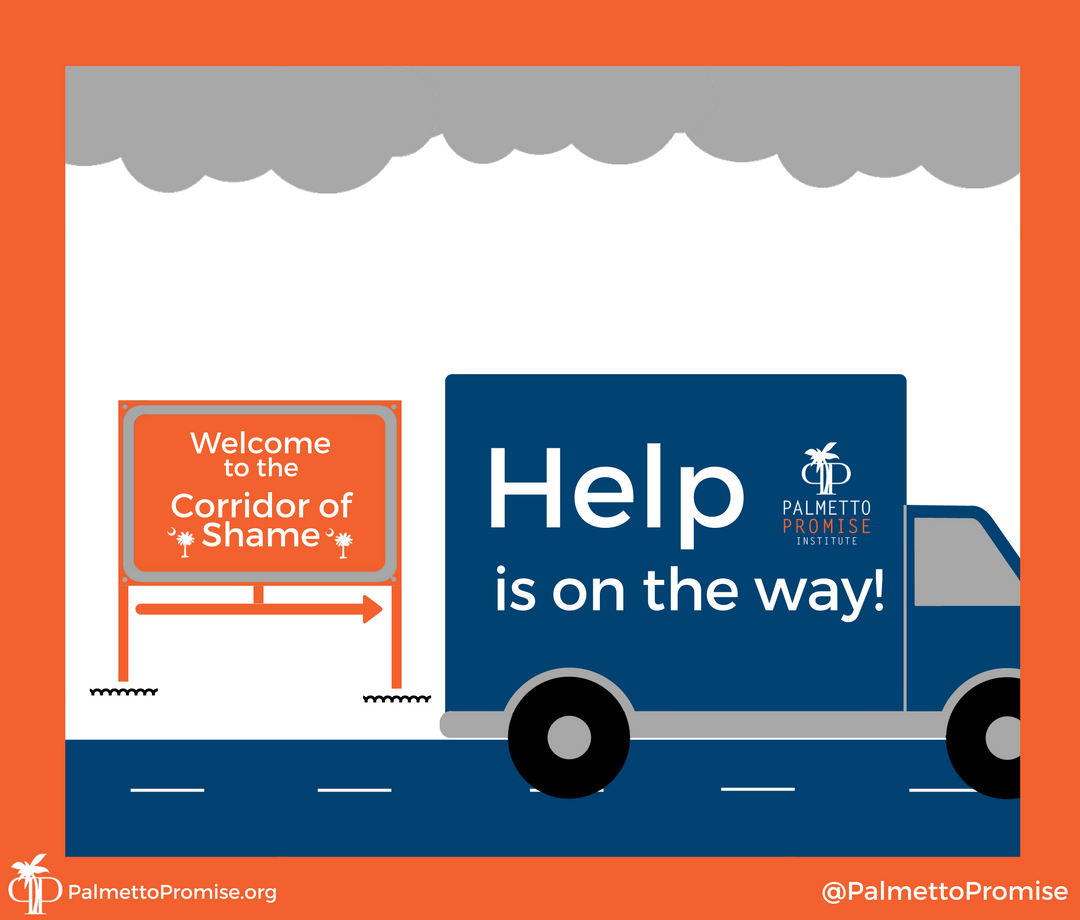Learning Is A Joy: The “Corridor Of Shame”

Adam Crain
Each year, just under 130,000 South Carolinian’s attend public school in one of the 34 school districts that make up the representative districts in the public education lawsuit Abbeville School District V. State of South Carolina. If you do not know about it, you must learn because it is already changing the landscape of public education in South Carolina. Not all, but many of these districts are in the “Corridor of Shame” – a name given to the area along the I-95 corridor between Columbia and the coast. According to the South Carolina Supreme Court, the state has failed to provide a “minimally adequate education” to public school students in these rural counties.
The language “minimally adequate education” stems from South Carolina’s state constitution and the long twenty-year legal battle that ensued after Abbeville filed the case in 1993. School districts across South Carolina argued that the state bears the responsibility for not adequately educating students in these districts as the Constitution requires. They won!
In 2014, in a 3-2 decision, the South Carolina Supreme Court decided the state is primarily to blame for the failure of these schools and districts. Then Chief Justice Jean Toal wrote in the opinion:
“It is the Defendants [the State] who must take the principal initiative, as they bear the burden articulated by our state’s Constitution, and have failed in their constitutional duty to ensure that students in the Plaintiff Districts receive the requisite educational opportunity.”
Even though many would argue the Court’s decision overstepped its judicial bounds into the realm of policy-making, there is no doubt that South Carolina has a real opportunity to rethink how we “do” education for our poorest students.
As South Carolina looks ahead at how to address the issues facing our rural school districts, we must remember the Court’s admission:
“In our view there is a clear disconnect between the inputs and outputs of the education system…Plaintiff Districts’ outputs – measured in both district and student achievements, including student test scores – are troubling… Student performance in the Plaintiff Districts demonstrates an apparent disconnect between intentions and performance.”
Even though some argue that directing more money to the district should be our first instinct, the Court made it clear that more structural reforms are needed as well. According to the South Carolina Department of Education and the Office of Fiscal Affairs, over 100,000 students are on the Free and Reduced Lunch program. 21 out of the 34 districts have over 90% of the school population enrolled in the Free and Reduced Lunch program.
South Carolina consistently performs near the bottom in national education rankings. Unless we are content to settle with zip code and economic status being the determining factor of a child’s education opportunity, public policy must change. Part of that change, as outlined in our H.O.P.E. plan, should be Education Savings Accounts (ESAs).
Two aspects of ESAs provide the groundwork for revitalizing the South Carolina education system. First, ESAs offer choice to parents. Instead of providing failing schools and requiring students to go there, let’s offer them some real help in the form of more choice. Allow them to use a portion of state education dollars to customize their own education. Allow them to buy textbooks, pay for tuition, hire a tutor, or employ an occupational therapist.
Second, ESAs begin to mitigate the numerous problems inherent in the education funding formula. For decades, counties that have a greater economic output and therefore higher property values have raised a larger amount of local education funds. The disparity in funding between poor and rich districts is a direct consequence, not of prejudice, but of property tax value which we cannot expect to be equal across rural and urban counties. This funding disparity in and of itself is a problem that needs to be fixed, but for the people enrolled in an ESA program, education funding is sent directly to the student. Although the amounts may fluctuate some, it is well known that individuals spend money more wisely than school board bureaucrats.
Ultimately, the Abbeville ruling reinforces what we already know: too many students do not have access to a quality education in South Carolina. If throwing more money at school districts has not worked for all these years, it will not start working now. What we need first in responding to Abbeville is persistence, as Dr. Oran Smith wrote about just recently. On the bare-bones policy side though, Education Savings Accounts are a good start in responding to the Court Order and the Corridor of Shame.
Be sure you’re caught up on this series!
Learning is a Joy: Introduction
Learning is a Joy: What’s an ESA?
Learning is a Joy: The iPhone of Education
Learning is a Joy: A Foundation for ESAs




